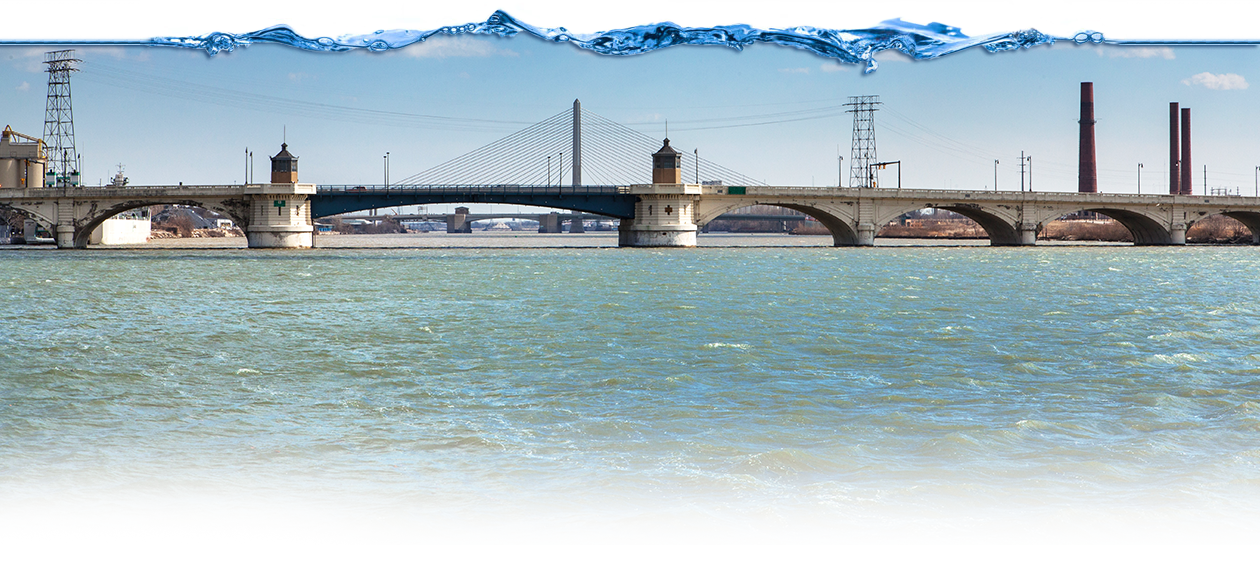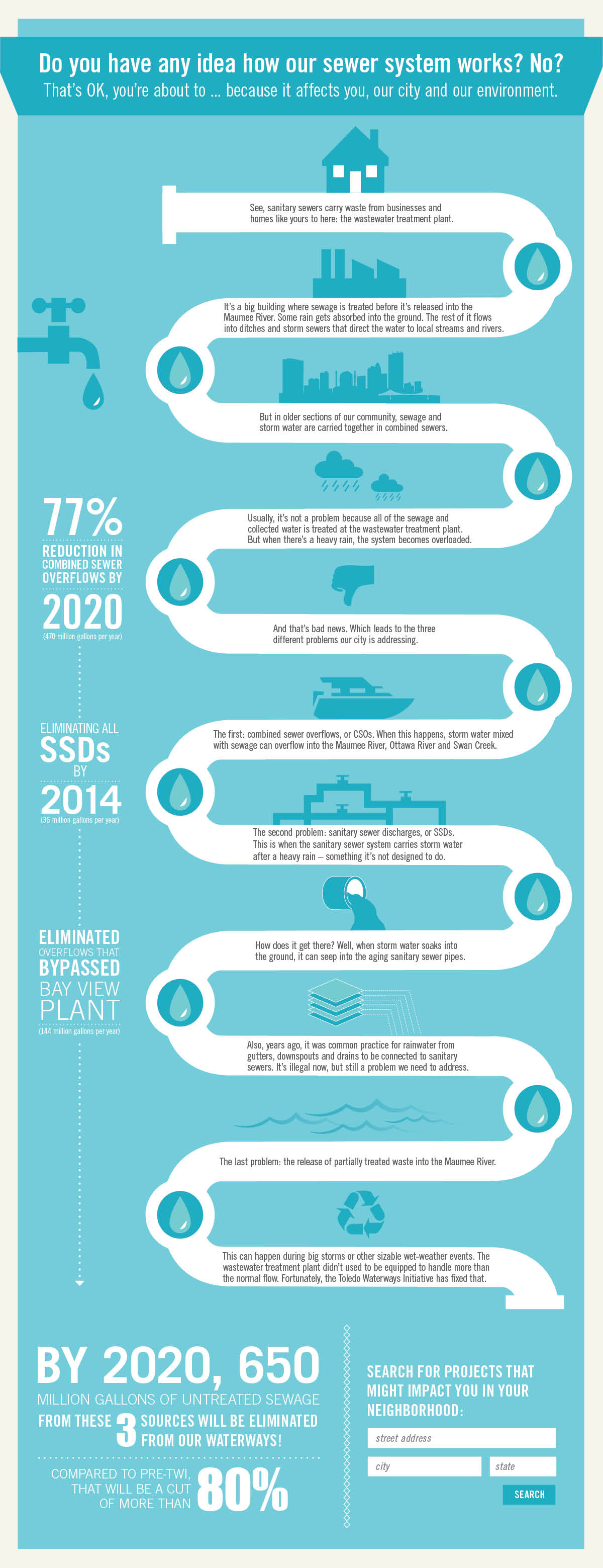Making Our Rivers Cleaner.
The City of Toledo constructed its first sewer collection system in the late 1800s, consisting of underground brick sewers that carried both sanitary sewage and storm water from homes and businesses. This system emptied directly into the Ottawa River, Swan Creek and the Maumee River, as was typical of many growing industrial cities. This map shows how our watersheds feed into our most vital waterways.
As population increased, the network of sewer pipes was expanded and Toledo also built facilities to treat the wastewater before allowing it back into our waterways. However, during heavy rains, the system would still overflow into the rivers. Many of those overflows, called combined sewer overflows, or CSOs, are still present today.
Upon citizen approval in 2002, the City of Toledo launched the Toledo Waterways Initiative (TWI) to eliminate the majority of these overflows and reduce water pollution.
TWI will reduce contaminants in our rivers, streams and Lake Erie by building several types of structures to hold, separate or divert storm and waste water during periods of heavy rain and funneling this water for treatment before being returned to the waterways.
TWI is a $527 million program that will prevent 80% of the average overflow volume from getting into our waterways.
Please take a look at the graphic below for a better understanding of how the system works.
Program Progress
The Toledo Waterways Initiative (TWI) program encompasses more than 45 separate projects over the course of 18 years, at a total cost of $529.65 million. This bar shows the construction phase of the program is completed.




